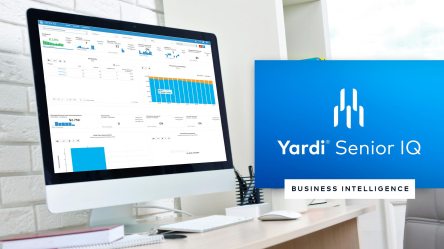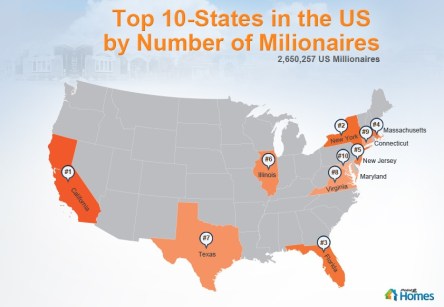How will transparent data revolutionise real estate? This was the underlying question for Ben Robinson, CEO of Raffles Quay Asset Management in Singapore, when he sat down with Yardi’s Bernie Devine recently for the latest instalment of Yardi Proptech Insights. Ben oversees the largest integrated mixed-use development at Singapore’s Marina Bay. In real estate terms, One Raffles Quay and Marina Bay Financial Centre constitute 4.5 million square feet of prime Grade A office and 179,000 square feet retail space. In human terms, the precinct is usually the workplace of 26,000 people. Four years ago, RQAM realised digital technology was the key to engaging with this 26,000-plus workforce. “We had no brand with the individuals who worked in our precinct, and we needed to communicate with them directly. That’s where we started our digital transformation,” Robinson says. By the Bay was launched in 2019. More than a tenant app, By the Bay is also a booking system for RQAM’s BaySpace flexible workplace solution. It is a connector that gives people access to BayFit exercise classes and education. It is a platform to support BayDine and the array of food and beverage options, rewards and discounts at Marina Bay. And it puts BayGreen, with information and ideas to live and work more sustainably, into the palm of people’s hands. Fast forward to 2021. With just 15% of people at their desks each day, due to work-from-home orders, By the Bay has proved an invaluable tenant engagement tool. Among the current benefits are mindfulness classes, a national steps challenge, complimentary gym passes and health assessments, as well as dining vouchers and exclusive perks. “We’ve got a great playground at our disposal,” Robinson noted. By the Bay supports RQAM’s vision to deliver “premium” hospitality experiences, Ben added. By the Bay’s digital access controls, for example, not only allow occupants to enter and exit their building safely in a few smart phone clicks. People can also invite guests into the space, which means concierge can “come out from behind the desk and act as experience ambassadors” rather than “taking numbers and handing out cards.” By the Bay’s anonymised data, complemented by data from building information systems, is stored in a data lake dubbed BayWatch. The data lake will take time to fill, Ben said. Understanding future trends is dependent on a solid history of past data. But with the right tools, we can “forecast the future of space – and this is something we haven’t been able to do before,” Devine added. Devine, who is responsible for Yardi’s growth in Asia, said the pandemic had forced a rethink of how people use space right across the region. Real estate organisations now realise they aren’t space providers – they are service providers, he said. “I’m seeing base rent as a percentage of total revenue getting smaller – not because base rent is going down but because the proportion of value add is increasing.” “But that brings complexity” and demands more sophisticated back-end systems. Yardi is on a journey of “connecting the property to the business,” Devine added. In June, Yardi acquired UK-based Forge Bluepoint, a cloud-based visitor management solution that connect turnstile, elevator and parking data to other Yardi platforms, like its all-in-one co-working management system, Kube. While RQAM expects some “rationalisation,” Robinson does not predict a “significant” drop in space requirements. Tenants will be looking for more room for collaboration and projects, for example, and will need more overflow space on peak days of the week. This is where BaySpace can step in. BaySpace is more than a flexible workspace offering. It is an “enterprise solution” that can support tenants with everything from fully-designed and fitted space to financing, Robinson noted. RQAM’s analytics capabilities already provide rich insights into this flexible workspace offering and “forward indicators of growth and contraction requirements are going to be very powerful.” Robinson suggests starting with “quick and dirty...
Senior IQ Update
New Look, New Tools
Yardi Senior IQ has been out for a few months now, and it’s already seen a huge amount of interest from the industry. As clients have gotten into the swing of things, their feedback is helping make the business intelligence solution even more useful for senior living. The latest release, Senior IQ 1.6, is now live. To make the upgrade process easier for our clients, Yardi is switching away from manual installs for new Senior IQ plugins. Yardi can now take care of things automatically, so you get the latest features as soon as they’re ready. Check out these highlights of what’s new in Senior IQ: Home page redesign The home page has a new look to ensure the first data you see after signing in is clear, relevant and actionable. The portfolio statistics at the top have been replaced with three customizable tiles. You can sort KPIs for all your communities by different attributes like property owner, care level or region, and your occupancy percentage and census are also available at a glance. Below the tiles, the community section now sports a tabbed format. You can easily switch between the table grid and map, depending on what you’re most interested in seeing. We’ve added display settings as well that let you customize the density and layout of your data. To top it off, you can now export the community grid to an Excel spreadsheet. Tool tips With the abundance of KPIs, tiles and widgets available in Senior IQ, it’s important to know what each does when you’re reviewing or building out your dashboards. That’s where the new tool tips come in. Hover your mouse over the familiar blue information icon on a widget or measure to see a quick explanation of what it’s...
The Power of Data
Insight from Richard Gerritsen, Yardi
Editor’s note: Richard Gerritsen is regional director for Yardi’s sales team, based in Amsterdam. The following piece appeared in Property Week and is reprinted here with permission. The tech giants of the world – the likes of Google, Facebook and Amazon – are putting all their efforts into gathering, analysing and monetising data about our everyday lives. I find it fascinating that so much of the data they use is generated inside a property, whether it Is the residential property where I live, the office where I work or the shopping centre where I shop. And yet we in the real estate industry are happy to sit back and observe these companies make money from that data, without questioning how we ourselves can better use it. We focus far too much attention on wondering whether data is relevant. This, I believe, is the wrong way of thinking. We need to capture as much data as possible in our properties – because providing we can learn to properly analyse that data, it will allow us to make infinitely better decisions about our portfolios. I understand why property companies are reluctant to embrace the power of data. After all, the essence of traditional real estate is based on the scarcity of information. If you’re a UK investor wanting to invest in Amsterdam, for example, you look for a local expert. If I’m that local expert, and I know something you don’t, you must pay me for it. I’m making money, and if I give you the right advice, you’re making money too. Everyone is happy and the model works. But when innovators come in and disrupt that model, and recognise my local knowledge is just data that could be in a database, we risk being overtaken....
Multifamily Update
From Yardi Matrix
What’s the verdict on the U.S. multifamily market—healthy, ailing or somewhere in between? Data presented in a recent webinar led by Yardi Matrix indicates that the news is mostly good. “Despite a fair number of headwinds that include decelerating rent gains, growing supply, the advanced age of the economic cycle and the increase in interest rates, the multifamily market remains in a healthy state,” says a presentation delivered by Jeff Adler and Jack Kern, vice president and director of institutional research, respectively, for Yardi Matrix. Positive signs for the U.S. multifamily market include: The economy, which grew by 2.3% in 2017 and the first quarter of 2018, added more than 200,000 jobs so far in 2018 and spurred a high level of consumer confidence; Plateauing rental unit deliveries combined with steady economics that will increase rents by an estimated 2.9% in 2018; Rising wages and a tight job market that “pulls people off the sidelines”; Moderate inflation Potential crosswinds include: Demand—meaning jobs and population—which, while strong, is shifting to lower-cost cities, driving a gradual rise in homeownership; Increasing financing costs; Abundant multifamily capital, holding cap rates steady and compressing spreads; New supply deliveries that are still being absorbed in many markets. There’s lots more insight in the full webinar. The recording, presentation and accompanying report are available...
Focus on Asia
New Real Estate Tech Era
Reliance on spreadsheets and manual processes in Asia will likely fade as investors and technology providers lay the groundwork for sweeping modernization, according to a recent survey of technology adoption in the region’s real estate industry. Yardi sponsored the survey and subsequent report on current and anticipated technology applications by real estate investment firms, developers and service providers in Asia. Chinese real estate business intelligence source Mingtiandi completed the survey and report, which describes the region’s real estate’s current technology adoption as “firmly in the PC age,” with “significant reliance on manual methods for collecting and storing data” that makes it “slow to make the jump to database-enabled online solutions that can respond to marketing, analysis and property management challenges.” While companies have some systems in place, “the majority [of respondents] still see the Asian region in general, and the real estate industry specifically, as lagging world trends.” Key findings from the survey, the majority of whose respondents work in China, Hong Kong and Singapore: More than 55% of respondents perceive Asia as trailing the West in the adoption of technology within the real estate industry; less than 12% saw the region as the leader Almost 77% regard real estate as trailing other industries in technology adoption; less than 6% regard property companies as leaders More than 83% consider access to information a competitive necessity More than 42% manage leasing, sales and property management on spreadsheets 43% identify internal resistance to change as the single largest barrier to adopting online tools for improving workflows and streamlining operations Asked to identify their priorities, more than half of respondents want better information on deal-related data. Forty-two percent listed access to leasing information and more than 35% identified better access to client contact information. ‘The results of...
Retail Management
Keys to a Successful Portfolio
As modern landlords strive to drive footfall and revenues in their shopping centers, they are using sophisticated new tools and techniques. Astute use of data can lead to better-informed decisions – but how is the impact of this new discipline being felt across the property industry? Yardi brought together a panel of thought leaders in the sector in a round table event in central London. Fiona Hamilton, global head of retail for international brands, BNP Paribas Allan Lockhart, property director, NewRiver REIT Charles Maudsley, executive director, head of retail, British Land Sophie Ross, group head of multichannel, Hammerson Ailish Christian-West, head of portfolio, shopping centers, Landsec Claer Barrett, personal finance editor, Financial Times (chair) How widespread is the use of data becoming within physical retail assets? SR: It’s relatively easy to capture data – it’s much harder to add value. I would say that only around 20 percent of the data gathered by landlords is being used effectively. CM: Data is just the starting point. At British Land we collect and analyze more data than ever before about shopping patterns, demographics and spending. We replay that to retailers. Anonymised mobile phone signals can show us a heat map of where shoppers are in the center, and point to linkages between retailers. For example, our brand profiling shows TK Maxx and Pret a Manger are highly correlated. TK Maxx in Hinckley – would an adjoining Pret boost their sales? We can measure conversion rates – the number of people who pass a store versus the number who actually go in. We can say to a retailer, it’s 30 percent in your shop, but it’s 90 percent elsewhere, so let’s find out why. We can show retailers looking to open a store with us how their...
Multifamily Outlook
Smooth and Steady
Yardi Matrix reports another strong summer for the multifamily real estate sector. The fundamentals were downgraded from “great” to “consistently good” but several factors suggest continued, healthy performance. Even rapid development in some of the nation’s hottest markets has slowed to a more sustainable pace due to construction labor shortages. The shortages may have longer-lasting effects due to disaster recovery efforts throughout the United States. Rents For the last year-and-a-half, rent growth as gently declined as rents inched upward. The rent growth deceleration may be drawing to an end, though, as the supply boom reaches it apex. National average rents increased by 2.4% on a year-over-year basis in August, yet are down from 4.6% at this time last year. Deliveries are not manifesting as quickly as previously anticipated, which should moderate rent increases. The long-term outlook for multifamily seems promising due to favorable fundamentals and demographic trends: Millennials are forming households, wage growth remains solid, and the economy is relatively healthy. Hottest Markets The hottest metros for rent growth are still secondary markets that are lagging on supply. Tacoma (8.1 percent), Sacramento (7.7 percent), Colorado Springs (7.6 percent) and the Inland Empire (4.3 percent) are four of the fastest growing markets yet they’re only estimated to increase stock by 1 percent this year. These markets benefit from their proximity to larger markets such as Seattle, the Bay Area, Denver and Southern California. They enjoy vigorous employment growth and popularity with Millennials. The young renters look forward to the areas’ desirable lifestyles with lower costs. There are always exceptions. Seattle faced 5.9 percent rent growth regardless of the surge in supply. Analysts are exploring the connection between rents and the city’s increased minimum wage. Minimum wage increased from $9.47 in 2015 to $13. Nashville is...
Maximize Revenue
Use Data Better
The National Apartment Association (NAA) recently hosted the 2017 Education Conference in Atlanta. Marketing Maneuvers: Data in the Driver’s Seat explores how data can inform marketing decision and maximize revenue. Panelists included Candace Weaver, Director of Marketing, Bell Partners; Diana Norbury, Vice President, Multifamily Operations, Pillar Properties; and moderator Dharmendra Sawh, Industry Principal, Revenue Management and Business Intelligence Sales at Yardi. The trio reinforces the importance of operations, revenue management, and marketing working together to reach goals. Below are three takeaways from the session: Understand the “Magic Mix” Before you can gather data, four key components must be in place to generate web-based data sets: SEO– search engine optimization is how your site is written to interact well with search engines. If you don’t have this solid foundation, you’ll have to work harder and spend more on SEM. Quality SEO contributes to higher organic rankings. SEM– search engine marketing includes paid search features. It is second best to organic rankings. “In one of our properties, there were an average 497 organic views but an average 690 views with paid search. Paid search will boost you but you can’t do SEM well without SEO,” explains Weaver. SEM comes with unique benefits as well. In one Bell case study, only 23 percent of leads came from SEM yet those leads made up 43 percent of total conversions. ORM -online reputation management entails how your brand is perceived online. This includes but is not limited to reviews and comments on your site and third party sites. Both Norbury and Weaver recommend having designated reputation management teams. “Of the 2 percent of people that click ‘Reviews’ on our property website, they have a 46 percent chance of converting,” says Weaver. SMO- social media optimization may overlap with ORM...
Cloud Clarity
CRE Data Trends
A group of real estate technology experts—including Alex Stanton, Yardi industry principal for commercial—took stock of cloud computing’s growing role in real estate in a recent Realcomm-sponsored webinar, “The Latest Trends in the CRE Cloud.” With about 80% of companies running some portion of their workloads in public or private clouds, the panel explored the new opportunities this dynamic environment presents real estate companies as well as potential pitfalls. Emphasis on security Stanton focused on the challenge of safeguarding the massive amount of information involved in cloud-based commercial asset management. “Sources of real estate data are ever-expanding, and more public and private information is available as the Internet of Things takes hold,” he said. Commercial real estate is now edging into the “Big Data” phase with transactional data being married with content including photos/videos, satellite imagery, weather data and building performance systems. While the collection points for this information can optimize business and site efficiency, they also present more potential points of entry for security threats. As a result, he said, “the bar is continuously being set higher for security.” Yardi and other solution providers create vulnerability management protocols and multiple levels of data center and application security. Real estate companies, meanwhile, must educate their employees on protecting the information they access with business applications on remote devices and other means. “We continue to see the acceleration of technology adoption in the commercial real estate space. It will be an exciting journey, but from a data governance standpoint we need to constantly adapt and identify the solutions that will connect them in an ever-evolving environment,” Stanton said. IT’s new perspective Another panelist was Bob Rybak, chief information officer for Morguard, whose portfolio includes 44 million square feet of commercial space and adopted 100% cloud...
Tread on Me
Pavegen Floor Tiles
By harnessing every footstep, Pavegen floor tiles turn walkways into energy sources and help cities convert pedestrians into power. What if that “spring in your step” could be converted to energy? Imagine your footsteps providing enough power to light the path you’re walking on, or even contribute to the overall load at the supermarket you cruise or the airport you rush through to catch a flight. For Pavegen CEO and Founder Laurence Kemball-Cook, every footfall provides an opportunity. “My idea was a floor tile that would convert the kinetic energy from a footstep into electricity,” Kemball-Scott explains in an interview with The Guardian. “Every time someone steps on the tile, they generate seven watts of power. The energy is stored within batteries, and then used to power lighting when it’s needed. It’s an off-grid power source for cities.” Kinetic Energy Recovery With its triangular design, the Pavegen tile captures the downward force applied by each step across its surface. Outfitted with flywheels in each corner, one tread applies enough pressure to spin the tile’s tiny turbines. Electromagnetic induction transforms this kinetic energy into electrical energy, which can then be stored or used. Describing the tiles to Bloomberg News as “a viable new type of off-grid energy technology,” Kemball-Cook strongly believes in the product’s potential for “a low-carbon contribution wherever there is high footfall, regardless of the weather.” Durable Design Though Kemball-Cook’s prototype met with lukewarm support – Al Gore and Shell were a few early advocates – improvements in durability and generation potential have increased interest in the Pavegen tiles. Kemball-Cook improved on the power generation of the initial concept by adding additional flywheels and a triangular design. The latest version of Pavegen is also stronger and more reliable. “The floor is one of...
Fund Management Tips
Terry Gowan, Yardi
Property fund management, by its very nature, is a complicated undertaking. Fund managers can avoid the more egregious pitfalls of the business by following a few ground rules, according to Terry Gowan, regional director of Australia and New Zealand sales for Yardi®. “With a little planning, you can save staff time, ensure data reliability, meet compliance requirements, satisfy investors and tenants. And making effective use of technology that delivers real-time visibility into investors, funds, investments, properties, opportunities and clients is another good strategy,” says Gowan, who works closely with almost half of Australia’s top performing real estate investment trusts and presents at property fund management industry events. Here are Terry’s top tips for successful fund management: Invest in an industry-specific system. “Get your fundamental accounting, processes and procedures correct from the start. Custom-made software systems are never cheaper than off-the-shelf systems designed for your industry. Use what the most successful of your peers are using and duplicate it with a provider that can stand the test of time.” Don’t go cheap. “Make sure the system you choose can deal with intercompany transactions, fees, ownership structures, foreign exchange, and properties. Avoid low-end options that aren’t efficient for these and other aspects of property and real estate investment management.” Establish an audit trail for financials. “Capturing low-level transactional data that reconciles every month is crucial to being auditable for compliance purposes.” Put everything into your database that you possibly can, while limiting disparate systems. “When the central source of truth for your data resides in a single database, you’ll have visibility from the fund through to the tenant, any time you need it. This approach avoids the manual labor and potential data loss associated with using interfaces and/or data warehouses or multiple custom reports to piece...
Optimizing ROI
Google Analytics for Properties
Savvy marketers know the importance of having good data to draw on when making marketing decisions. Google Analytics is the most widely known, free analytics platform available. Last month, the digital marketing experts at RentCafe hosted a call to dig in to the importance of using analytics data to understand your online audience, traffic, and conversions. One of the biggest complaints we hear about Google Analytics is that the information provided is overwhelming, making it difficult to know which reports are most important for property managers. In fact, a large percentage of people on our call said that they find it too confusing to use regularly (see below). We think that’s a shame! There are bits and pieces within each reporting segment that are relevant to all marketers. With the right questions in mind, you can use the data to make informed decisions about your marketing strategy. Who are you marketing to? The Audience tab provides in-depth reporting into who your current website audience is. It offers a broad overview of your audience profile, including how much time they spend on your site, where they’re located, and information about the devices they use. You can also learn a great deal about the demographics of your online audience. To put this information to use, start by taking a look at how well your online demographic information matches what you see on the property itself. Ask yourself if you’re actually reaching the people you want to target. If you’re trying to shift the demographics within your community, have you positioned your website to appeal to the new prospects you want to attract? Geo-location information will help you see if the audience visiting your site is coming from the cities you’d expect. Which channels are you relying...
Promoting Conversions
Analytics Reporting Unveiled
Whether you’ve tapped into your inner Marketing Genius with RentCafe or you’re piecing together a plan on your own, your site analytics can help you capitalize on your areas of opportunity. Understanding how to interpret the metrics on your analytics reports can influence changes in your marketing techniques that increase leads and conversions. At first, simply pulling up reports may seem intimidating. Familiarizing yourself with common concepts will take the guess work and the trepidation out of analytics. Use these ground rules as a foundation before wading through the key metrics: You’re in sales and marketing, not IT, but when you’re dealing with data you’ve got to learn to speak data lingo. Understanding these terms will make interpreting and communicating about your reports easier. You’ll also know which data sets will help you answer questions that arise while you’re planning your strategy. It’s also important to remember that trends take time to emerge. Mark your calendar and give yourself several weeks before making changes, and at least three months before a major overhaul. When it is time to try something new, make small, incremental alterations rather than several changes at once. Otherwise, you won’t know which changes made the impact that you see on future reports. Lastly, you may want to define your desired end result and then work backwards. This may mean that not all features on a report are important to you. Adjust your filters for what you need and put other features on the back burner (for now). If you aren’t sure what you need, our recommendations are below. Key Metrics Traffic source There are three traffic source types: direct, referral, and search engine. Direct traffic means that renters typed your site address into the address bar. Referral traffic means that renters found you through a link on another site. When Google, Bing, and similar search engines send renters your way, that’s grouped under search engine traffic. Concentrate your resources on the top two traffic sources, especially if they bear a high click-through rate. Click-through rate When a renter sees your ad, clicks it, and lands on your site, that is a click-through. The click-through rate is often measured as a percentage. Click-throughs are just one way of measuring the success of an ad. Conversion rate is another, more popular measurement for success. Conversions This is where many people find it easiest to see the benefits of their time, efforts and creativity. Conversions, or Goals, mark when a renter sees your ad and follows through with the call to action. (The call to action could be filling out an application, making a call, subscribing to a mailing list, etc.) High conversion rates mean that you’re catching the attention of the right people using the right tactics. Low conversion rates may mean that you should re-evaluate your approach. Maybe your keywords aren’t specific enough. Maybe you’re focusing on a social media platform that doesn’t appeal to your demographic. There are plenty of variables. Pick one or two, run A/B tests, and check out the analytics again in a few weeks. Bounce rate In addition to conversion rates, high bounce rates could mean that you’re fishing in the wrong pond. The bounce rate measures the percentage of renters that make it to one page on your site and then leave. They don’t visit other pages and they certainly don’t follow through with the call to action while they’re on the site. Your property (or the way that the property has been presented) did not meet their needs. When your bounce rates are high, it’s a good indicator that you may want to trace back to the beginning of your marketing strategy to make sure that your site presentation, property presentation, and keywords are working together to fulfill your desired goals. Of course, RentCafe clients can always contact their Yardi representatives for more tips and...
Averting Data Disaster...
Multifamily best practices
With an interest in marketing, job title based in IT, a strong grasp of social media and a passion for real-life residents, Bill Szczytko has earned a following as someone who can be counted on to deliver prescient insight about apartment management. His network of contacts in the industry is nationwide, and he effectively uses Twitter to gain a grasp of what fellow multifamily professionals are talking about this very minute. He’ll appear at the upcoming Apartment Internet Marketing conference next Monday and Tuesday in California, where he’ll talk about avoiding landmines while doing business online. He shared a sneak peek into what those landmines look like in a recent interview. What are the most worrisome threats that multifamily firms might face from hacking? Szczytko: The most worrisome threat we face is our own complacency. Hackers want one thing. Information. This information can be social security numbers, credit card numbers, and bank account information. Some try to obtain this information for the fun of it but most use this information to make money. There are many ways they try to get it. Viruses, phishing schemes, brunt force attacks, and hacking weak user account information. Most threats can be avoided just by being smart about how you surf the internet and the kinds of passwords you create. What best practices are necessary for a company seeking to protect itself in the online realm? Szczytko: It’s essential that you have several things in place. First, is a password policy that walks a good line between passwords people can remember and security. Second, is a form of antivirus running on the company machines. The best antivirus is always you but it’s hard to get people up to the same level in regards to what is dangerous online...
Most Valuable Homes
Data from Point2Homes
Is your home valued at more than $1 million? Chances are, you live in California .. or maybe New York. A real estate data analyze from Point2Homes revealed that over 2.5 million Americans own homes worth more than $1 million. California and New York are home to many of these residences – in fact, 800,000 of the million dollar dwellings are in the Golden State. With real estate prices that have already rebounded post-recession, any Californian knows that owning a home valued at $1 million may not mean you consider yourself a millionaire. See maps of the states with the highest property values, and find out where the priciest real estate is located, on...















